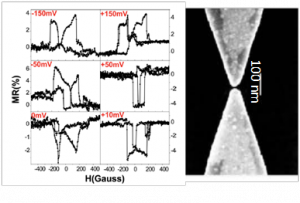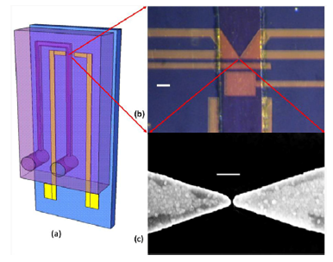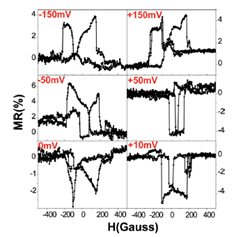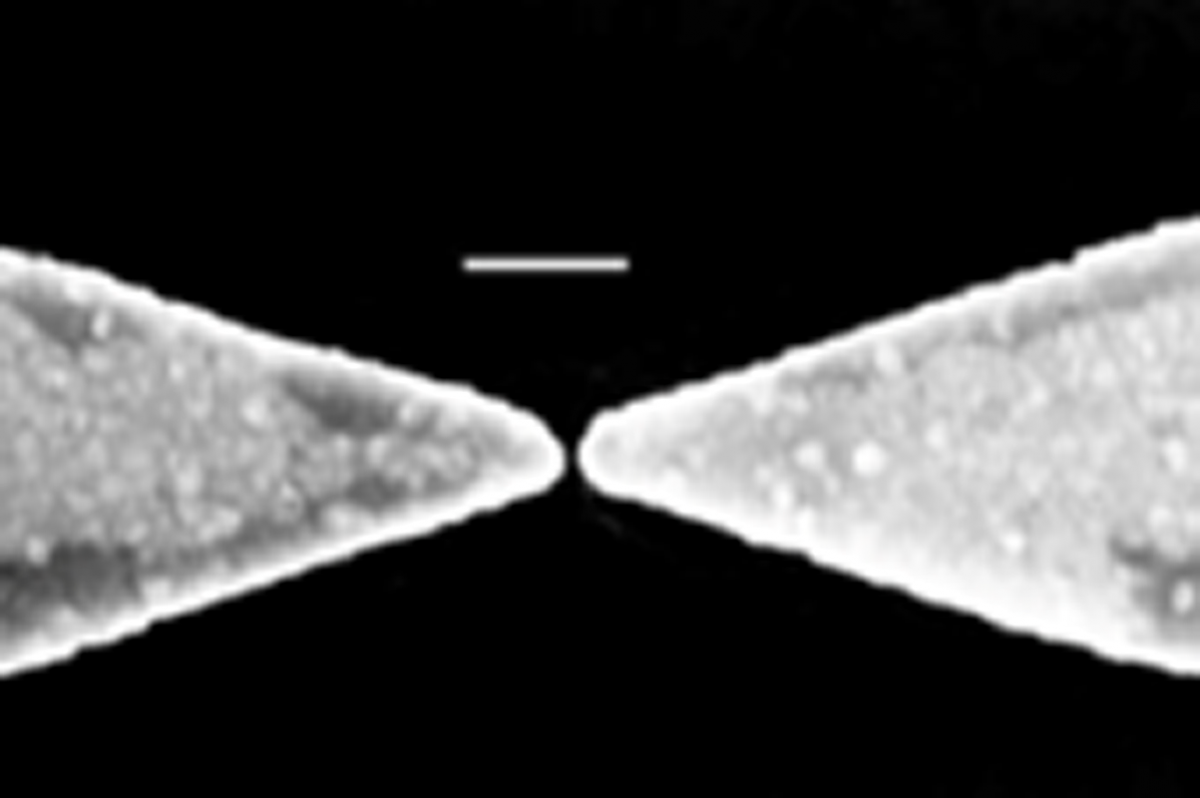
Reducing the size of a magnetic metallic contact makes possible the study of spin dependent electrical properties in the ballistic regime of electrical conduction. Understanding of giant magnetoresistance properties relies essentially on diffusive transport models, and is therefore challenged when nanosized constrictions are the main source of resistance in a device. We are therefore investigating magnetoresistance properties of magnetic interconnects made of a few atoms only, concentrating our efforts to the study of anisotropic magnetoresistance properties, expected to be enhanced in the ballistic transport regime.
Example 1: Lab-on-chip approach.
We used electrochemical techniques for creating Ni or Co nanocontacts, plating these metals over nearby (< 50 nm) planar electrodes patterned by standard lithography techniques. A microfluidic circuit design was used to miniaturize the setup and get fast control of the chemical environment of the nanocontact device. Anisotropic magnetoresistance properties, fingerprints of ballistic transport, have been identified. Furthermore, data measured when modifying the bath composition reveals that magnetoresistance properties depend on the ion concentration in the bath. Local enhanced magnetic forces can impact the chemical reactions at the electrodes when highly concentrated electrolytic baths are used.

Figure 1. Left: schematics of the PDMS microfluidic enclosure of the chip. Right: optical microscopy image, with electroni microscopy zoom of the device, before a nanocontact is realized by Ni plating.
More info :
Hetero-nanojuctions with atomic size control using a lab-on-chip electrochemical approach with integrated microfluidics
P. Lunca Popa , G. Dalmas, V. Faramarzi, J. F. Dayen, H. Majjad, N. T. Kemp, B. Doudin
Nanotechnology 22 (2011) 215302
Quantized Magnetoresistance in Atomic-Size Contacts
A. Sokolov, C. Zhang, E. Tsymbal, J. Redepenning, B. Doudin
Nature Nanotechnology, 2, 171-175 (2007)
Example 2: Defects in nanocontacts obtained by electromigration
Large current densities present in nanoconstrictions can result in electromigration, which can be used to reduce the contact size down a few atoms. A key advantage is the experimental capability to tune the contact resistance, from diffusive to tunneling regime of conduction, separated by a transition through a quasi-ballistic regime. Comparisons studies of magnetoresistance properties indicate that defects in the contacts are revealed in the tunneling regime properties, with a related signature in atomic-sized nanocontacts.

Figure 2: Magnetoresistance properties of a Ni nanocontact showing a tunneling magnetoresistance strongly bias dependent, explained by a model of resonant tunneling though an impurity.
More info :
Magnetoresistance signature of resonant states in electromigrated Ni nanocontacts
J.-B. Beaufrand, J.-F. Dayen, N. T. Kemp, A. Sokolov, B. Doudin
Appl. Phys. Lett. 98, 142504 (2011)

